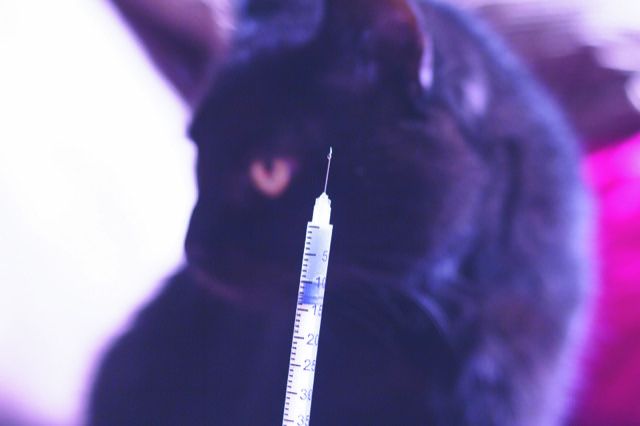Last month we explained that sometimes cats with diabetes can stop having insulin shots twice a day if they go into remission, perhaps with the help of proper dietary management and weight loss measures. Now, a new drug has been approved by the Food and Drug Administration that will allow some cats who have the disease to forgo insulin injections altogether and simply swallow a daily pill instead. That will do more than free cats from the trouble of having to go through twice-daily jabs. It will also free up the schedules of their owners, who have to be vigilant about administering the insulin shots every morning and every evening.
For years, many people with diabetes have been able to take a pill instead of having to deal with insulin injections. The pill does not contain insulin, which would never make it through the digestive tract intact once swallowed. Rather, it allows the body to use the insulin on hand more effectively. (It can’t be used by people with type 1 diabetes, who virtually don’t make any insulin at all and have to have it delivered to their bodies.)
The new pill for cats, called Bexacat (bexagliflozin tablets), works similarly. That is, it doesn’t contain insulin but makes it easier for the insulin a cat already has to do its job. It is more than 80 percent effective, the FDA says. Cats are the first species other than people for whom a diabetes pill has been approved.
How Bexacat works
Normally, when sugar that is in the blood (glucose) makes it to the kidneys, the kidneys do not move it to the urine but send it back into the bloodstream to be used by the body. With Bexacat, however, the kidneys do filter excess sugar from the blood so that it ends up in the urine — and out of the body. That means that if a cat with diabetes is still producing some insulin (not all cats with the disease do and require insulin shots no matter what), the insulin made by the body is not overwhelmed. It can properly handle the amount of glucose present, facilitating its transfer to body tissues as needed rather than having to deal with more sugar in the blood than is good for a cat. Excess sugar in the blood, the hallmark of diabetes, leads to all kinds of problems if not controlled, just as it does for people. That extra sugar travels through the blood to all the body tissues and has an adverse effect on their health.
Not for all cats
Unfortunately, a cat who is already getting insulin injections cannot be switched to Bexacat. It’s only for cats newly diagnosed with diabetes.
Bexacat should also not be given to any cat who is not eating well, dehydrated, or lethargic when diagnosed with diabetes. Additionally, cats treated with Bexacat may be at increased risk for serious adverse reactions if their bodies are not producing enough insulin for the drug to be safe for them. One of them is ketoacidosis, a condition in which the liver breaks down fat for fuel, and toxic levels of compounds called ketones can build to dangerous, even life-threatening, levels. Any cat who develops lack of appetite, dehydration, lethargy, or weight loss while on Bexacat should immediately be brought to the veterinarian and checked for elevated ketone levels.
The potential for side effects is serious enough that the drug comes with a box warning that says, “Serious side effects have occurred, with or without warning, and have sometimes led to death in cats treated with Bexacat. Serious side effects may require your cat to be hospitalized.” Along with the aforementioned signs, vomiting and diarrhea can occur. It’s for that reason that regular check-ups need to be scheduled, along with periodic blood work, to make sure the cat is responding favorably to the drug. It’s also important to identify which cats would make good candidates for the drug when they are first diagnosed with diabetes.
For all of these caveats, Bexacat is still a welcome development in the pharmacologic arsenal to treat feline diabetes and one with significant potential to help cats who develop the disease, which is on the rise in our pets.
Note: Some cats who start out on Bexacat may need to be switched to insulin injections as their disease progresses. Their bodies may produce less and less insulin over time, to the point that the pill doesn’t do the trick.




